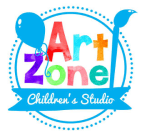)
The Melanin Project Starts: This week at Preschool we read All The Colors We Are: The Story of How We Get Our Skin Color by Katie Kissinger along with The Skin You Live In by Michael Tyler. The books informed that 1) Skin Color comes from our mom, dad and our ancestors 2) Skin is alive and contains melanin “grains” that determine our skin color where more melanin creates darker skin and less melanin creates lighter skin 3) Melanin has a job to protect us from the sun 4) We can decide what color we want to call our skin (cream, ice cream, mocha, caramel, peach, pink, tan, olive, chestnut, etc.). The kids were leaning in, sitting close, eyes glued and deeply attentive. I think we hit a chord with this information.
The kids were excited to mix lots of colors, and made many many many shades of skin color. Here are some basic colors we started with and added more and less of each color to make so many shades:
Green + Red = Carmelo Brown
Green + Red + White = Ice-cream Brown
Green + Red + Black = Dark Chocolate Brown
When we looked at all the colors we made, we decided on a name for each color. Then we decided what color matched our skin closest, and gave our skin its own name.
Why talk explicitly about skin color? Several years ago I received a jarring wake-up call. I read the Newsweek article “See Babies Discriminate” by Po Bronson and Ashley Merryman (2009) citing the research work of Birgitte Vittrup of Children’s Research Lab at the University of Texas. Vittrup highlighted that despite the best intentions of liberal-minded parents who intended to model racial equality, many children expressed negative bias towards dark skin people. She was surprised to learn about the deep resistance of “white” parents to talk explicitly race. The Newsweek article underscored why it is difficult AND important; “of all those Vittrup told to talk openly about interracial friendship, only six families managed to actually do so. And, for all six, their children dramatically improved their racial attitudes in a single week. Talking about race was clearly key.”
Teacher Development: Ever since we read the Newsweek article, Art Zone has been teaching our staff the importance of our anti-bias work and the fact that it is important to talk to kids explicitly about skin color. It is not easy and comfortable work. On the day we started our melanin project, the teachers discussed our personal experience growing up and shared the messages we were told about skin color. Some of us were told that it is rude to talk about skin color; some of us felt discomfort talking explicitly about skin color and its association with race and class. We contrasted our feelings about skin color conversations with our comfort talking about eye color and hair color. We felt brave and vulnerable sharing profound parts of ourselves . We all enjoyed watching the kids engage in this exercise and wished we had this information, freedom, and respect from the adults in our lives when we were kids.
Next Steps: Teachers and kids collectively decided to continue our painting project by taking the colors we made and punching circles from the papers so we can draw faces on the circles. I am inspired to bring in items of brown color such as acorns, toffee, cocoa, licorice, nutmeg, etc. to continue bringing in positive associations and varieties of brown. Personally, I uncovered my “art” bias away from the colors of brown – messages I received from my art teachers about not turning colors “muddy” implying brown is messy, dirty and not desirable. Reflecting on the projects I design and present, I rarely explore with kids the variety of browns, greys, and beige colors. Am I unconsciously effected by social bias around these colors? I’m sure I am. Now, I can break this cycle as a teacher and not pass on these bias to my students. Does my “art” brown bias relate directly to unconscious conditioning of holding racial bias? I’m not sure I have a clear answer (and that’s ok). I will continue to be aware of the question. Two things I know for sure: I will always need to actively and explicitly work on uncovering my unconscious bias, and as I grow my consciousness, it will be incorporated to my on-going work with kids and families.
More Links:
NPR video follow up on the Newsweek Story
Racial Equity Tools – This is such a great website for people interested in understanding the complex story of how race and class operates in our society.
Understanding Prejudice – I just learned about this website. It looks great.

